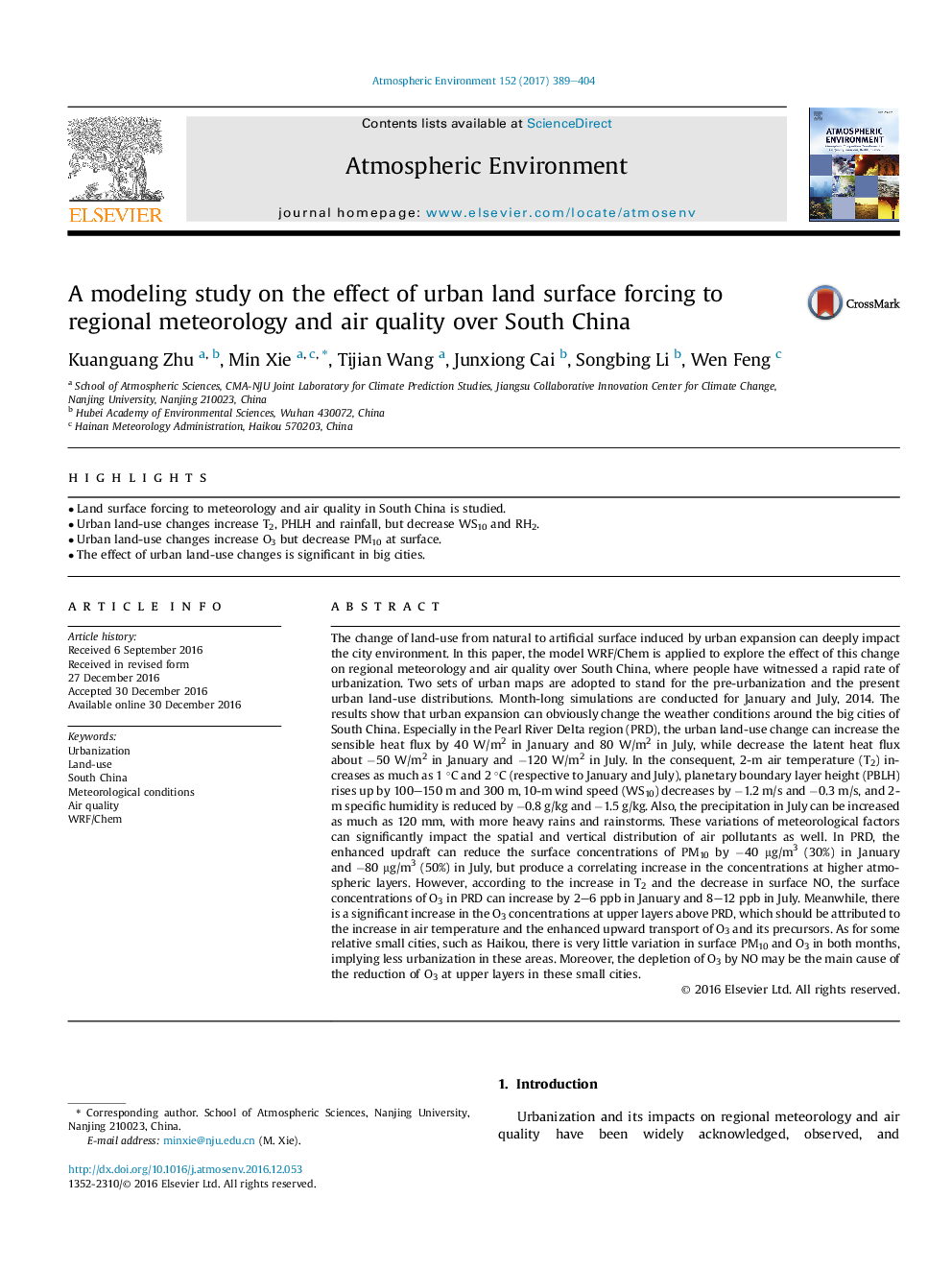| کد مقاله | کد نشریه | سال انتشار | مقاله انگلیسی | نسخه تمام متن |
|---|---|---|---|---|
| 5753416 | 1620322 | 2017 | 16 صفحه PDF | دانلود رایگان |
عنوان انگلیسی مقاله ISI
A modeling study on the effect of urban land surface forcing to regional meteorology and air quality over South China
ترجمه فارسی عنوان
یک مطالعه مدل سازی اثرگذاری سطح زمین شهری برای رسیدن به هواشناسی منطقه ای و کیفیت هوا در جنوب چین
دانلود مقاله + سفارش ترجمه
دانلود مقاله ISI انگلیسی
رایگان برای ایرانیان
کلمات کلیدی
موضوعات مرتبط
مهندسی و علوم پایه
علوم زمین و سیارات
علم هواشناسی
چکیده انگلیسی
The change of land-use from natural to artificial surface induced by urban expansion can deeply impact the city environment. In this paper, the model WRF/Chem is applied to explore the effect of this change on regional meteorology and air quality over South China, where people have witnessed a rapid rate of urbanization. Two sets of urban maps are adopted to stand for the pre-urbanization and the present urban land-use distributions. Month-long simulations are conducted for January and July, 2014. The results show that urban expansion can obviously change the weather conditions around the big cities of South China. Especially in the Pearl River Delta region (PRD), the urban land-use change can increase the sensible heat flux by 40 W/m2 in January and 80 W/m2 in July, while decrease the latent heat flux about â50 W/m2 in January and â120 W/m2 in July. In the consequent, 2-m air temperature (T2) increases as much as 1 °C and 2 °C (respective to January and July), planetary boundary layer height (PBLH) rises up by 100-150 m and 300 m, 10-m wind speed (WS10) decreases by â1.2 m/s and â0.3 m/s, and 2-m specific humidity is reduced by â0.8 g/kg and â1.5 g/kg. Also, the precipitation in July can be increased as much as 120 mm, with more heavy rains and rainstorms. These variations of meteorological factors can significantly impact the spatial and vertical distribution of air pollutants as well. In PRD, the enhanced updraft can reduce the surface concentrations of PM10 by â40 μg/m3 (30%) in January and â80 μg/m3 (50%) in July, but produce a correlating increase in the concentrations at higher atmospheric layers. However, according to the increase in T2 and the decrease in surface NO, the surface concentrations of O3 in PRD can increase by 2-6 ppb in January and 8-12 ppb in July. Meanwhile, there is a significant increase in the O3 concentrations at upper layers above PRD, which should be attributed to the increase in air temperature and the enhanced upward transport of O3 and its precursors. As for some relative small cities, such as Haikou, there is very little variation in surface PM10 and O3 in both months, implying less urbanization in these areas. Moreover, the depletion of O3 by NO may be the main cause of the reduction of O3 at upper layers in these small cities.
ناشر
Database: Elsevier - ScienceDirect (ساینس دایرکت)
Journal: Atmospheric Environment - Volume 152, March 2017, Pages 389-404
Journal: Atmospheric Environment - Volume 152, March 2017, Pages 389-404
نویسندگان
Kuanguang Zhu, Min Xie, Tijian Wang, Junxiong Cai, Songbing Li, Wen Feng,
